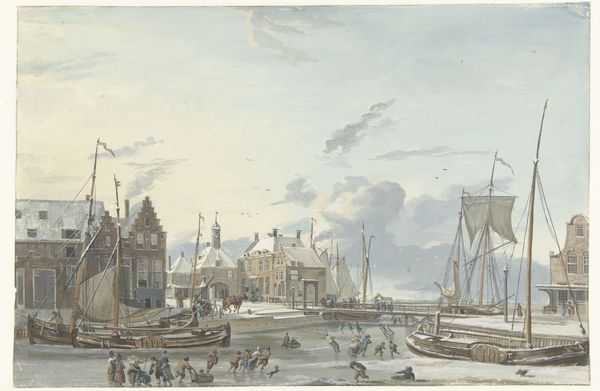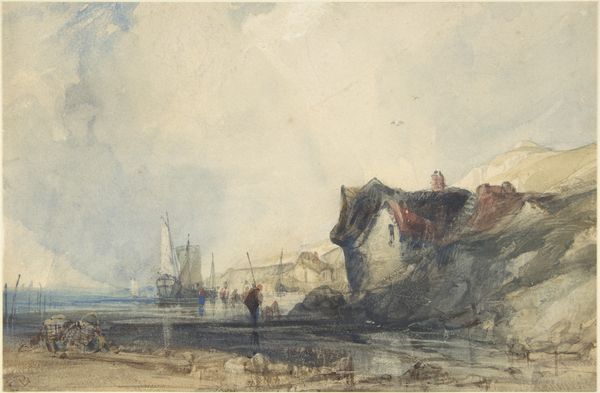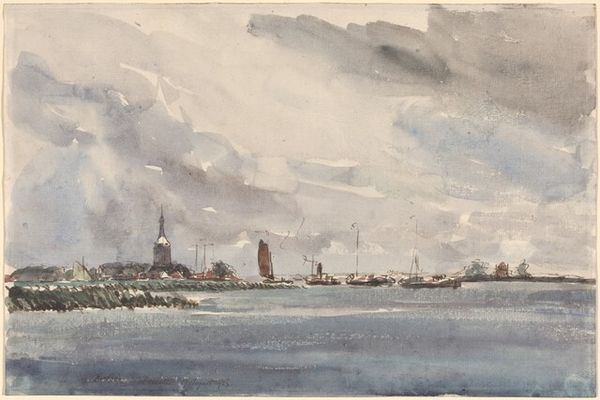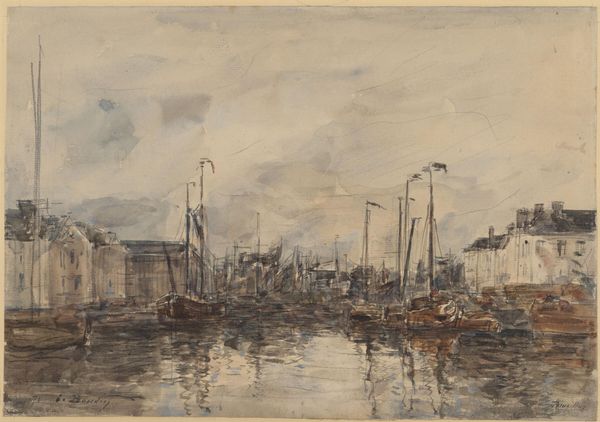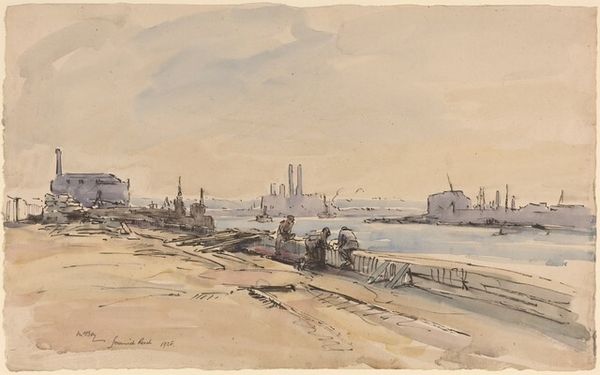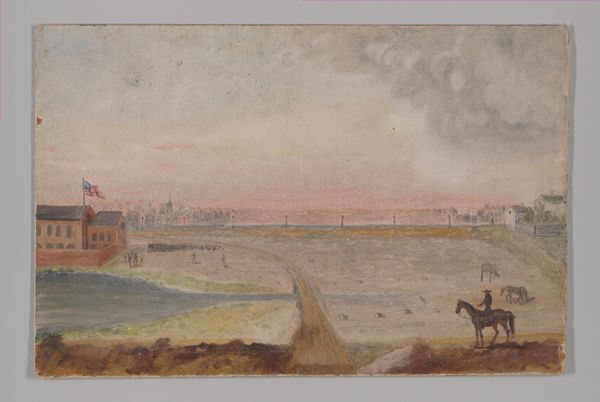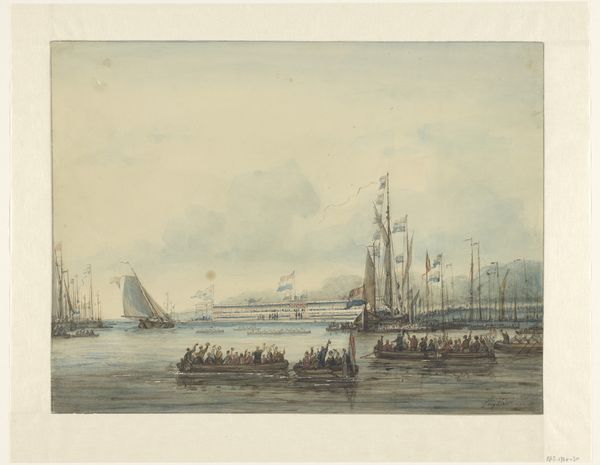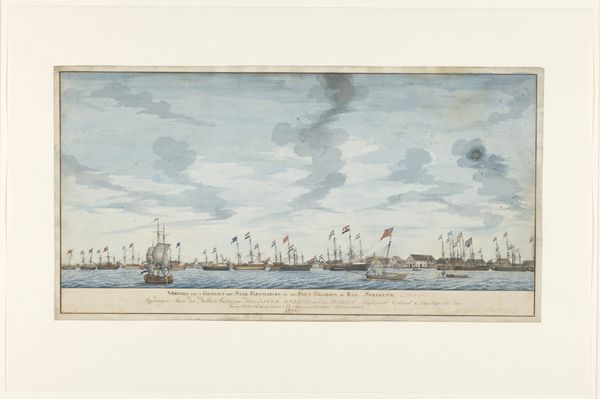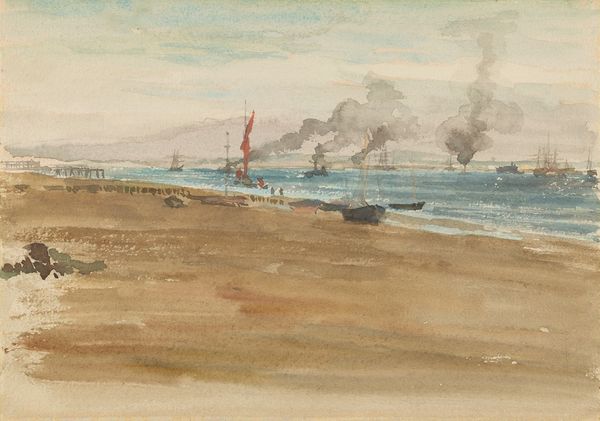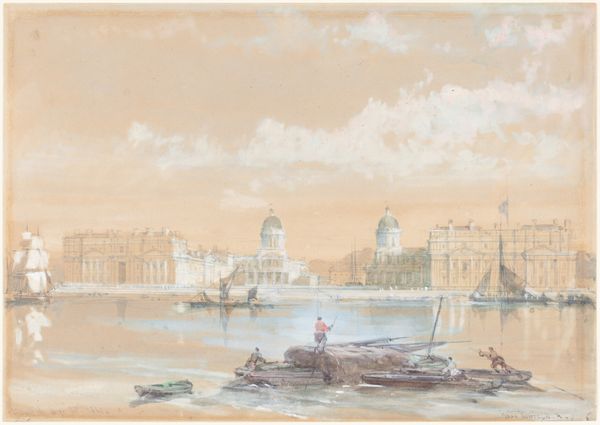
The Cable Passed From the Works into the Hulk (the Old Frigate Iris) Lying in the Thames at Greenwich 1865 - 1866
0:00
0:00
drawing, print
#
drawing
#
ship
# print
#
impressionism
#
landscape
#
river
#
impressionist landscape
#
oil painting
#
watercolor
Dimensions: Sheet: 6 7/16 × 10 1/16 in. (16.4 × 25.5 cm)
Copyright: Public Domain
Curator: Robert Charles Dudley created this evocative watercolor and graphite drawing, entitled "The Cable Passed From the Works into the Hulk (the Old Frigate Iris) Lying in the Thames at Greenwich" between 1865 and 1866. It's currently held at the Metropolitan Museum of Art. Editor: My first impression is melancholic. There’s a sense of industrial decline looming, captured in this almost ghostly rendering of a ship and dock. Curator: Indeed. The hulk of the Iris, a former warship now reduced to serving as a cable-laying vessel, is rich in symbolic significance. Consider how ships historically represent journeys and power. This ship, in its decline, signifies the shifting tides of empire, the transition from sail to steam, and perhaps even broader societal anxieties regarding industrialization and obsolescence. Editor: Right, this isn't just about technological advancement. It speaks volumes about Britain’s naval prowess beginning to diminish at the time. You've got the physical decay of the ship mirroring anxieties of losing global dominance. Curator: Absolutely. Dudley seems fascinated by the way objects carry cultural memory, you see it even in the placement of the cable, suggesting a connection to a larger, unseen world beyond the frame. The cable is the literal connecting factor. The ship as a symbol transforms when attached to a cable-- it is connected to the social reality. Editor: That’s an interesting observation about the cable. It is the link to further extraction and perhaps the beginning of international telecommunication. Looking at this composition through a postcolonial lens, the industrial advancements become complicated, because what does this technological shift mean to exploited populations? Curator: That reading makes visible the way seemingly innocuous scenes are imbued with a legacy of control and resource exploitation. The seemingly muted palette serves only to reinforce those underlying emotional themes, adding to the aura of decay you picked up on at first. It prompts a reflection on the costs, both tangible and intangible, associated with "progress". Editor: Looking again, the water itself isn’t serene but almost disturbed. And the lack of vibrant color—almost monochrome —emphasizes the solemnity of the moment. It makes you consider those working in the shadow of progress and who have likely been written out of official historical accounts. Curator: And as an artwork, it’s a potent reminder that even images of industrial progress can carry narratives of loss, transition, and ultimately, cultural transformation. Editor: This makes me think a lot about how artists can invite conversations around social responsibility. What begins as an unassuming sketch ultimately leads to much needed discourse.
Comments
No comments
Be the first to comment and join the conversation on the ultimate creative platform.

